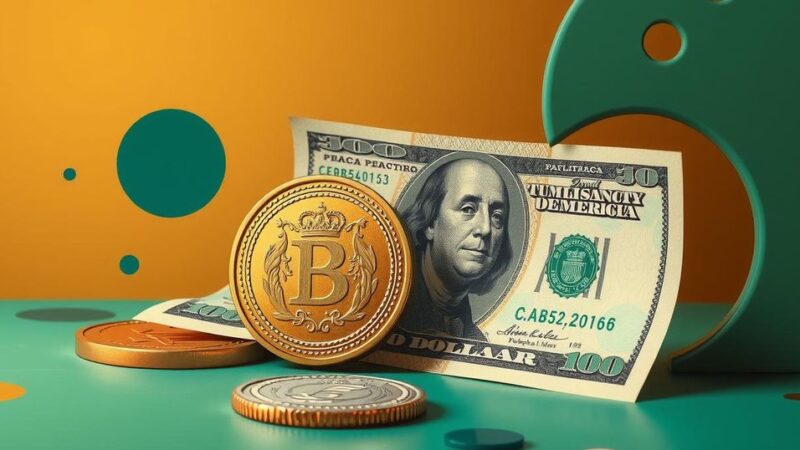On March 19, 2023, gold prices in the UAE remained stable, with 1 gram priced at 358.53 AED, and a tola at 4,181.86 AED. Factors such as geopolitical tensions and potential rate cuts from the Federal Reserve are influencing market behavior. Central banks globally are increasing gold reserves, underpinning its attractiveness as a safe haven asset.
Gold prices in the United Arab Emirates remained stable on March 19, 2023, with a price of 358.53 AED per gram, slightly up from 358.33 AED the previous day. Similarly, the cost per tola was observed at 4,181.86 AED, showing minimal change from 4,179.50 AED a day earlier. This stability reflects ongoing market trends amid external economic pressures.
The price movements of gold are influenced by various geopolitical factors as well as market expectations regarding the Federal Reserve’s monetary policy. As tensions in the Middle East and potential tariff-related impacts from the Trump administration escalate, investor interest in gold as a safe-haven asset is heightened.
Indeed, gold reached a new record high near $3,038-3,039, driven by rising instability in the region and fears of a trade war. Analysts anticipate that the Federal Reserve may need to adjust interest rates lower due to economic conditions tied to such geopolitical tensions, further supporting the appeal of gold.
Traders are particularly attentive to the upcoming Fed decision, expected to affect demand for the US Dollar and, consequently, the valuation of gold. Recent market behavior indicates expectations of potential interest rate cuts over the coming months, which traditionally bolster gold prices due to its lack of yield.
Emerging markets and central banks continue to accumulate gold as a reserve strategy, with data indicating that in 2022, central banks added a significant amount of gold to their holdings, reaching a record annual purchase. This incorporation underscores gold’s role as a safeguard against currency fluctuations and economic instability.
Gold’s value also correlates inversely with the US Dollar and US Treasury yields. These dynamics mean that as the dollar depreciates, gold prices often rise, allowing diversification in turbulent times. Conversely, stronger equities can place downward pressure on gold prices.
In conclusion, the gold market remains sensitive to geopolitical events and economic policy shifts. The stability in prices observed recently may not persist as external factors continue to exert influence on market dynamics. Investors should remain cautious and informed about these ongoing trends.
The recent stability of gold prices in the United Arab Emirates reflects broader market uncertainties influenced by geopolitical tensions and economic policy expectations. As central banks increase their gold holdings, the precious metal’s status as a safe haven continues to solidify. Careful monitoring of the Federal Reserve’s actions will be pivotal in determining future price movements. Investors should be aware of the potential implications of external pressures on gold valuations.
Original Source: www.fxstreet.com






